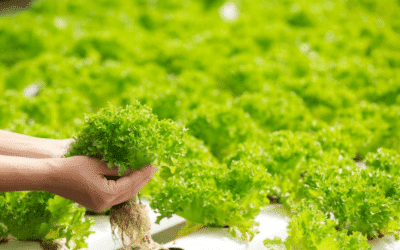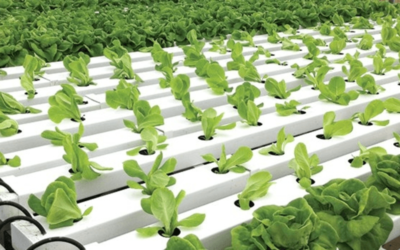The trend towards green and eco friendly living is growing as people are becoming conscious about the environment. Conserving resources is always a good place to start. The first step is to change your own habits in your home, which will not only help save the environment but also costs. You will probably be surprised at how much unnecessary stuff accumulates in your home and ultimately ends up on a landfill.
So, let’s look at ways you can reduce consumption in your home:
Use less paper
Avoid using paper cups and plates: There is no need for paper cups and paper plates if you have a fully stocked kitchen. If you don’t feel like doing dishes, then rather eat out. It’s more costly producing these items and then having them end up on a landfill. You do have to make small lifestyle changes sometimes in return for a greener and eco friendlier home. And really, in this case some soap, water and a few minutes of your time is definitely worth it.
Eliminate paper napkins and paper towels: Paper in the home doesn’t only include magazines, newspapers and postage. Think about how many times you have wiped your hands or mouth with a paper napkin or tended to spillage with a paper towel. What’s worse is that paper towels and napkins are not recyclable, so they are definitely items you should scratch off your green and eco friendly living home shopping list.
This doesn’t mean you now have to walk around with a dirty mouth or dirty hands after consuming a plate of vegs at dinner. It simply means you should choose an alternative, which in this case could be a cloth napkin, which you can simply wash and reuse.
Magazines and newspapers: It’s not uncommon to find a stack of magazines and/or newspapers in many households, unless it’s a green home of course. But these days, technology allows us to enjoy the same reading experience on a digital device, as electronic versions of most reading material is now available.
Paper receipts: Most businesses, including retailers are making the shift towards a paperless environment. Email receipts are fast replacing their paper counterparts. Help move this paperless process along by simply requesting that an electronic version of your receipt be emailed to you instead, next time you do your grocery shopping.
Audit your mailbox: We all know how annoying ‘junk’ mail can be and as a result, it either ends up being stashed into a drawer or cabinet or thrown in the trash. This means more unnecessary paper either accumulating in your home or unfortunately ending up in the landfills. Avoid this by contacting the advertisers and asking them to remove your name from their mailing list.
Get your bills and statements online: There is obviously mail that you are expecting and wanting to receive, such as your statements and bills. In this case you can contact your service providers and request that they send you digital versions instead. These days most businesses offer paperless alternatives anyway.
Avoid using disposable products: Don’t use plastic shopping bags, but if you already have them in your home then simply reuse them instead of getting more from the retailer when you do your grocery shopping. You can also purchase permanent shopping bags made from cloth or canvas that you can re-use every time you shop.
Also, when doing your shopping check the labels on all the products you wish to purchase and only select products with recyclable packaging.
Reduce your home energy consumption
Choose energy efficient appliances: Select appliances with a good energy rating. This is usually indicated by stars. The more stars, the better the rating.
However don’t be fooled by larger appliances, as their energy efficiency is determined by size versus consumption. Because they are bigger, they will still use more electricity than the smaller ones.
Your fridge and freezer consumes massive amounts of electricity because it operates 24/7, 7 days a week. When looking for a more energy efficient model, consider one that has butane or pentane for insulation.
Some countries are even implementing minimum energy performance standards on all new refrigeration appliances. It’s better to consider these options (if available), rather than those that are “CFC free,” as this is no reflection of their energy consumption.
Be sure to unplug your appliances once you have switched them off. Many appliances have a stand-by mode, which means they still draw electricity even when they are switched off.
Consider insulation for heating and cooling your home: In summer you want to keep your home cool, whereas in winter we want to keep your home warm. Unfortunately this means more electricity consumption, which is not ideal when you are striving to conserve resources in your quest for a greener and eco friendlier home. The solution is simple. Insulation. Insulating your roof or ceiling will naturally block out heat in summer and trap warmth in winter.
Prevent Draughts: Draught proofing your home is simple and cost effective. All you need to do is make sure your windows and doors are closed and sealed properly. You can seal doors with draught excluders and get special seals for your windows.
If you have a chimney then get a damper to prevent heat from escaping in winter when your fireplace is dormant and also from entering your home in summer.
Don’t use down lights: Not only do these lights chew up a lot of electricity, but they also cause heat loss by interfering with the ceiling and insulation. A good alternative is Compact Fluorescent Lights (CFLs) or light-emitting diode bulbs (LEDs).
Use shading on your windows: A lot of heat enters your home through your windows in summer, especially if they are big and face west, east or north. Blocking the sun’s heat means you don’t have to use extra energy via cooling systems to cool down the interior of your home. In winter, simply close curtains or blinds to help retain the heat inside your home.
Manage your air conditioner effectively: Ideally, if you want an authentic green and eco friendly living home, you should avoid using an air conditioner altogether. Consider ceiling fans as an alternative as they are more cost effective and use less energy. However, if you feel you can’t do without an air conditioning system, then use it sparingly.
It helps conserve energy if you keep windows and doors closed while your air conditioning system is active. Remember to switch it on before the heat of the day has already penetrated your home, as this will allow it to cool the interior a lot quicker.
It also helps to invest in a unit that has a thermostat and/or a timer as it will allow you to manage the unit more efficiently by setting the temperature accordingly and enabling it to switch off automatically. Avoid setting the temperature too low, as it will use more energy to maintain it.
Reduce water consumption
Water is a valuable resource and so, saving water is an obvious choice if you want a greener and eco friendly living home.
Look out for water-efficiency labels and standards (WELS): This scheme allows various water-dependant appliances, as well as showers, taps and toilets to be rated in terms of water efficiency, which is determined by their number of stars.
Cut down on shower time: If you shorten your shower by just a minute, you could save 150 gallons of water every month. If you prefer to bath, then make an effort to use less water and spend less time in the bath so you aren’t tempted to top up with more hot water when the water cools down.
Harvest rainwater: Save water by watering your garden with collected rain water. This can be done by installing a rainwater tank.
Use recycled greywater: This is used water from your basin, sink, tubs, shower and washing machines. Even though it may contain various household waste material, it can still be used to water your garden. Take note that sewerage water is not greywater.
Invest in a water saving showerhead: Water saving shower heads fully compliment green homes, as they not only help save water but are also great energy and cost savers.
Reduce, reuse, recycle
These activities fully support a greener and eco friendly living home environment. Not only do they help you conserve energy, they also reduce the amount of toxic gas emissions which are released into the atmosphere during extraction, manufacturing and disposal of various resources. Take advantage of recycling programs. Simply gather all the recyclable material in your home, such as paper, tins, magazines and other items and drop them off at designated recycling sites.
Go green in your yard
Composting is also a great way to limit the amount of garbage that ultimately ends up on landfills and contributes to greenhouse gas emissions. You can use food, as well as garden waste to produce compost which can then be safely fed back into the soil to help nourish your lawn as well as your plants.
Limit your fuel consumption
Transportation is a big contributor to your carbon footprint and so this is a great area where you can make a big difference. Reduce the number of errands so you use your car less. Instead of doing your shopping weekly, draw up a comprehensive shopping list and do your groceries fortnightly or monthly. If you are going on a long journey to an area you are not familiar with, avoid getting lost and clocking up additional miles by using a GPS.
Ultimately you want to try avoid driving where possible. If you are close enough to your destination, then rather walk or ride there on a bicycle. Not only will this help save fuel and the environment, but it will also have a positive impact on your health.
Avoid entertainment that uses energy: Consider spending more time reading and playing games to reduce the demand on electricity and natural resources.
Consider downsizing: Smaller homes are just easier to manage, especially if you want to reduce your consumption of resources. Smaller homes consume less energy for lighting, heating and cooling. So if you are aiming for a greener and eco friendly living home then consider downsizing. There will also be less space to accumulate paper and other unnecessary materials and you won’t need as much furniture or furnishings. If you intend to build your green and eco friendly living home from scratch, then be sure to consider green building ideas and techniques as well.
Reducing your overall consumption of various resources contributes to a greener and eco friendly living home, as well as a more sustainable living. Furthermore, you will also end up cutting costs significantly which is a great reward when choosing to go green. Remember to share these tips with family and friends. The more people that chooses greener living, the better it will be for the environment and for us all.








